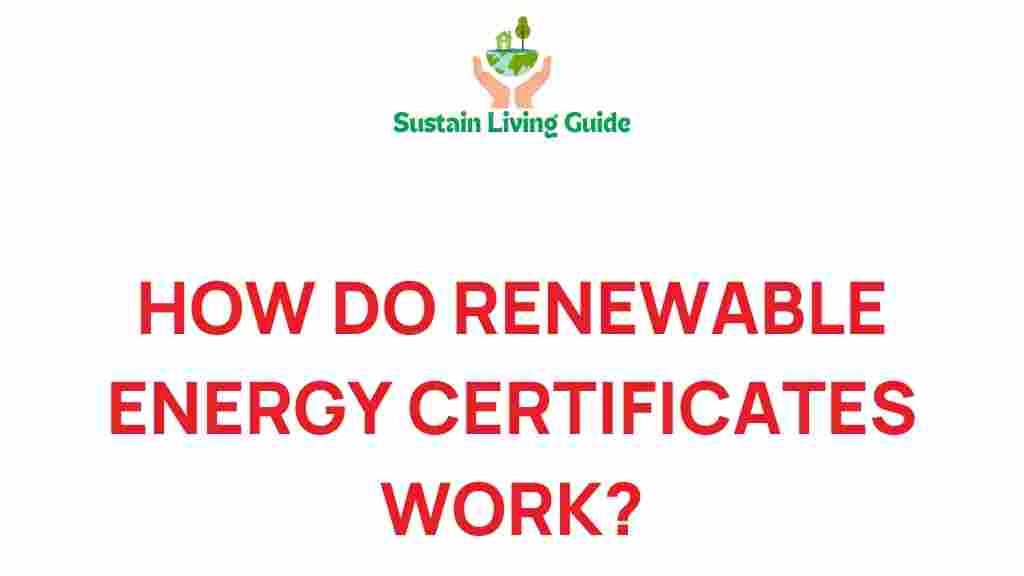Unraveling the Mystery of Renewable Energy Certificates
As the world shifts towards more sustainable energy sources, understanding Renewable Energy Certificates (RECs) has become increasingly important. These certificates not only help promote the use of renewable energy but also play a critical role in the energy market. In this article, we will explore what RECs are, how they work, their benefits, and the challenges associated with them. By the end, you will have a comprehensive understanding of renewable energy certificates and their significance in today’s energy landscape.
What Are Renewable Energy Certificates?
Renewable Energy Certificates, often abbreviated as RECs, are tradable certificates that represent the environmental benefits of generating one megawatt-hour (MWh) of electricity from a renewable energy source. They serve as proof that a specific amount of energy was produced from renewable resources, such as wind, solar, or hydroelectric power.
The Purpose of Renewable Energy Certificates
The primary purpose of RECs is to encourage the production and consumption of renewable energy. They provide a mechanism for businesses and individuals to offset their carbon footprint. By purchasing RECs, organizations can claim that they are using renewable energy, even if the electricity they consume comes from non-renewable sources.
How Do Renewable Energy Certificates Work?
The process of how RECs function can be broken down into several key steps:
- Generation: When a renewable energy generator produces electricity, they also create a corresponding number of RECs.
- Certification: These RECs are certified by an independent authority to ensure they meet specific standards.
- Tracking: Once certified, RECs are tracked in a registry to prevent double counting.
- Trading: Organizations can buy and sell RECs in a market, allowing them to demonstrate their commitment to renewable energy.
- Retirement: When a REC is purchased, it is retired from the market, ensuring it cannot be sold again.
Types of Renewable Energy Certificates
There are different types of renewable energy certificates, which vary based on the type of renewable energy source:
- Solar Renewable Energy Certificates (SRECs): Issued for solar energy generation.
- Wind Renewable Energy Certificates: Granted for electricity produced from wind energy.
- Biomass Certificates: Awarded for energy generated from organic materials.
Benefits of Renewable Energy Certificates
The advantages of Renewable Energy Certificates are numerous and impact various sectors:
- Environmental Impact: RECs help reduce greenhouse gas emissions by promoting renewable energy sources.
- Market Flexibility: They provide a flexible approach for businesses to meet renewable energy goals.
- Economic Growth: By creating a market for RECs, they support job creation in the renewable energy sector.
- Consumer Choice: Consumers can choose renewable energy through REC purchases, driving demand for cleaner energy.
Challenges Associated with Renewable Energy Certificates
Despite their benefits, RECs also face several challenges:
- Market Volatility: The price of RECs can fluctuate significantly based on supply and demand.
- Regulatory Hurdles: Different regulations across states and countries can complicate the REC market.
- Transparency Issues: The risk of double counting or fraud can undermine confidence in the system.
The Process of Acquiring Renewable Energy Certificates
Acquiring Renewable Energy Certificates involves several steps:
Step 1: Identify Your Needs
Determine how many RECs you need based on your energy consumption and sustainability goals.
Step 2: Choose a Provider
Select a trusted REC provider or broker that operates within the regulatory framework of your region.
Step 3: Purchase RECs
Once you have identified a provider, you can purchase the desired number of RECs directly or through a marketplace.
Step 4: Record Keeping
Ensure all transactions are documented and that you receive confirmation of REC retirement.
Internal and External Resources
For more detailed information on renewable energy and sustainability practices, check out this guide on renewable energy.
Additionally, for external resources, visit the National Renewable Energy Laboratory (NREL) for comprehensive research and data on renewable energy technologies.
Troubleshooting Tips for Renewable Energy Certificates
While navigating the world of RECs, you may encounter challenges. Here are some troubleshooting tips:
- Keep Updated: Stay informed about changes in regulations and market conditions that may affect your RECs.
- Verify Providers: Conduct thorough research on REC providers to ensure their credibility and legitimacy.
- Monitor Prices: Regularly check market prices to purchase RECs at the best rate.
- Document Transactions: Maintain accurate records of all your transactions for transparency and accountability.
Conclusion
Renewable Energy Certificates play a vital role in the transition to a more sustainable energy future. They not only help businesses and individuals offset their carbon footprints but also support the growth of renewable energy markets. Understanding how RECs work, their benefits, and the challenges they face is essential for anyone looking to engage in renewable energy initiatives. By acquiring and trading RECs, you contribute to a cleaner environment and promote the development of renewable energy sources. As we move towards a more sustainable future, embracing renewable energy certificates will be crucial in achieving our environmental goals.
This article is in the category Energy and created by SustainLivingGuide Team
